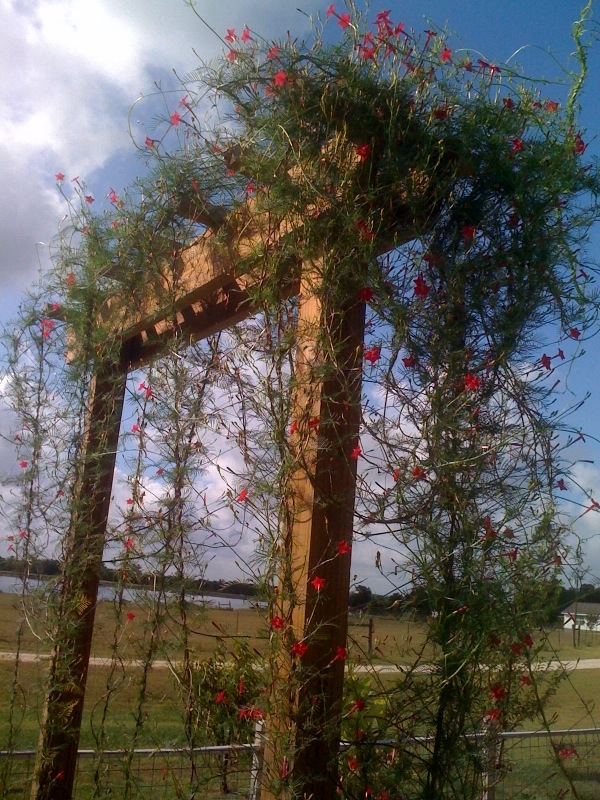If you are looking for a plant that is tough as nails and blooms from spring through fall, then guara may be a fit for your garden. Gaura is a Texas native that loves full sun and tolerates drought. I have learned to appreciate its drought tolerance this summer. Right now, I am pouring the water to my beds. While it is keeping things alive, nothing is thriving. Nothing that is, except the guara.
The guara that I have is a pink variety known as Onagraceae Guara lindheimeri. This variety grows natively in the Texas Hill country. As the name implies, guara was first “discovered” by Ferdinand Jacob Lindheimer. Lindheimer is known as the father of Texas botany. He worked as the first botanist in the state primarily between 1843 and 1852. Because of his extensive life-long work with plants, his name has now been assigned to 48 species and sub species of plants.
There are 20 species of guara that are native to the United States. This perennial can be found in Texas, Louisiana, and most of the Gulf South. Gaura is an upright growing plant that grows in clumps that can be 2’ to 4’ high and just as wide. The leaves are long and skinny with slightly serrated leaves. The plant produces long, thin stalks that are often red to burgundy in color. The inch long flowers have four petals and grow along these stems. The flowers can range in color from white to deep magenta and they drop after full bloom. Some varieties bloom white and then turn to pink in a single day. Many times, the flowers grow on the ends of the stems. When viewed from a distance, the flowers on the terminal ends of the stalks appear to be tiny butterflies “dancing” above the plant. This gives rise to its common name; Whirling Butterflies.
Guara is very easy to grow from transplants. Plant in early spring in full sun or partial shade. It prefers rich, well drained soil and it will tolerate alkaline conditions. It grows quickly and by early summer you will have a fairly large and attractive plant. By fall, your guara will be a large full clump of “Whirling Butterflies”.
Guara can reseed but it is not an aggressive self seeder. You can also divide guara once it has been established for several years. However, it develops a deep tap root and this can make transplanting a bit of a challenge.
Gaura is an attractive long blooming perennial that is perfect for the Texas border. Its open, airy foliage is attractive even when not in bloom. It flowers prolifically from spring through fall and butterflies and humming birds love the small flowers. While it may not be the flashiest plant in the garden, it is tough and reliable. The way it has continued to thrive in spite of the worst drought in our history has convinced me to use more of this survivor in my beds. Why don’t you try some in yours?






